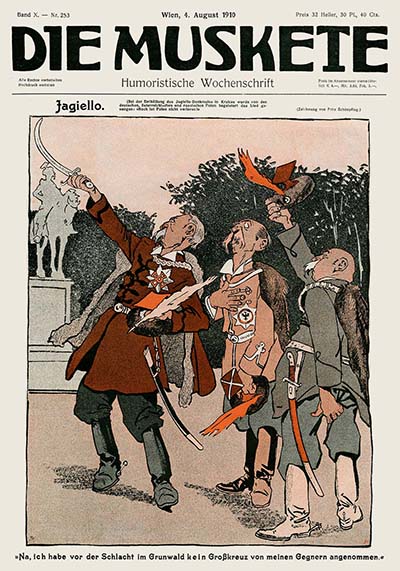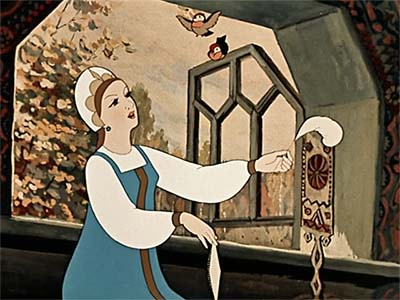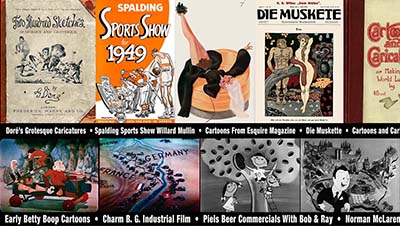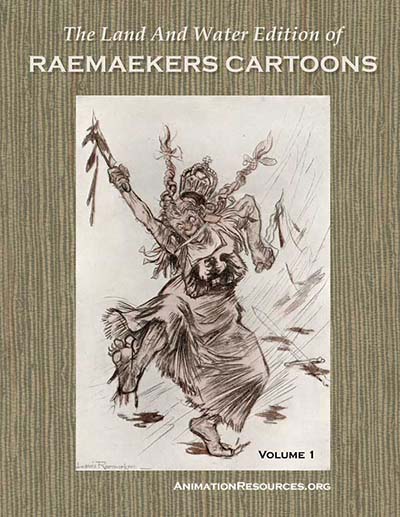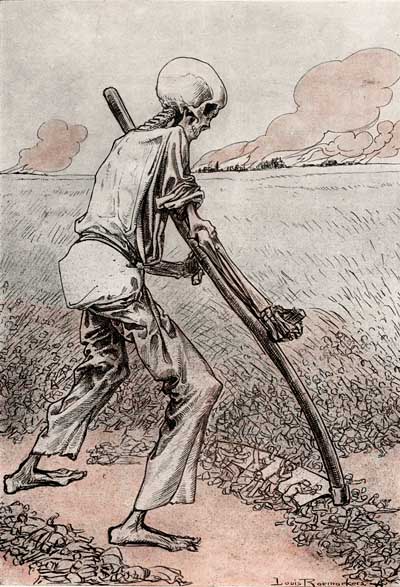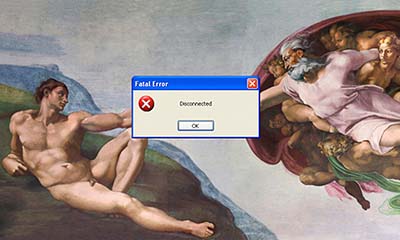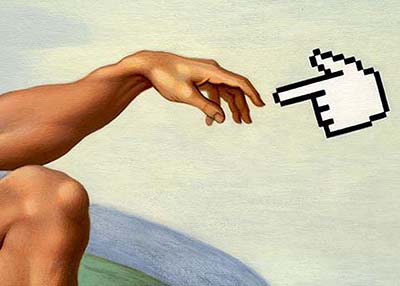
As a special thank you to our annual General and Student members, we have created a special page where we will archive past Reference Packs. There will be a new rerun of a complete RefPack between the new ones.
Available to Student and General Members
Die Muskete Volume Two![]()
Vol. X Nos. 253-160(August-September 1910)
During the 19th century, society had a totally different relationship with cartoons than we do today. Beginning with artists like James Gillray and George Cruickshank in early decades of the century, cartoons were seen as serious business. They crystalized the image of the rich and powerful in the minds of the masses, and even Kings and religious leaders were forced to take notice of their impact. The pen truly had become “mightier than the sword”.
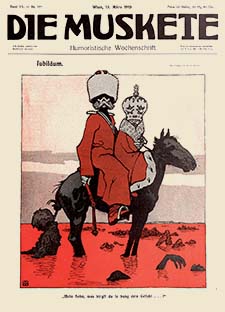
![]() With the dawn of the 20th century, the lives of people were changing. The modern world was emerging, and with it came pressures brought on by technology, new forms of government, colonialism and war. The gloves were off. Cartoonists no longer limited their satire to Kings and religious leaders. They wielded their power to satirize by skewering everyone and everything around them– religion, ethnicity, the rich as well as the poor, and the power that the government held over the public. Cartooning became a powerful tool for changing hearts and minds, as well as disseminating nationalistic propaganda. The conflicts that these new challenges created began building to a head, and it would eventually result in “The Great War”, World War I.
With the dawn of the 20th century, the lives of people were changing. The modern world was emerging, and with it came pressures brought on by technology, new forms of government, colonialism and war. The gloves were off. Cartoonists no longer limited their satire to Kings and religious leaders. They wielded their power to satirize by skewering everyone and everything around them– religion, ethnicity, the rich as well as the poor, and the power that the government held over the public. Cartooning became a powerful tool for changing hearts and minds, as well as disseminating nationalistic propaganda. The conflicts that these new challenges created began building to a head, and it would eventually result in “The Great War”, World War I.
But even though it was a difficult time politically, the world was experiencing a renaissance in the arts. There were two principle styles during this period: Historicism and Art Nouveau. Historicism was an ecclectic style which embraced neo-classical forms and themes. The subject matter consisted of idealized imagery of ancient Greece, mythological and historical tableaux, or exotic locales in faraway lands. The other popular style was Art Nouveau. In Germany, it was known as “Jugendstyl” (Jugend Style), named after Jugend, one of the most famous arts magazines of the day. Art Nouveau was based on craftsmanship and hand work. It rebelled against the machine-made look that was taking hold in graphics and consumer products in the early industrial age. It did this by putting the hand of the artist at the forefront and incorporating lush organic patterns derived from nature. These two styles were represented in all forms of art, from architecture to interior design, to ceramics, fabrics, fashion, sculpture, illustration… and even cartooning.
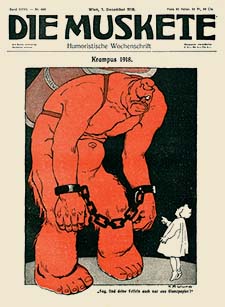
![]() The center of the arts at this time was Vienna, Austria, so it is natural that a great humorous arts magazine would come from that city— Die Muskete (The Rifle). The principles behind Die Muskete were initially quite different than either Jugend or Simplicissimus, its principle competitors from Berlin. Die Muskete was a humorous “men’s magazine” aimed at military officers and veterans. It still made fun of bureaucratic excesses, military inefficiency, social mores, the battle of the sexes, and religion, as well as political corruption, while remaining steadfastly loyal to the Emperor of Austria.
The center of the arts at this time was Vienna, Austria, so it is natural that a great humorous arts magazine would come from that city— Die Muskete (The Rifle). The principles behind Die Muskete were initially quite different than either Jugend or Simplicissimus, its principle competitors from Berlin. Die Muskete was a humorous “men’s magazine” aimed at military officers and veterans. It still made fun of bureaucratic excesses, military inefficiency, social mores, the battle of the sexes, and religion, as well as political corruption, while remaining steadfastly loyal to the Emperor of Austria.
The staff consisted entirely of local artists like Fritz Schönpflug, Karl Wilke and Franz Wacik. Each one brought something different to the table. Schönpflug specialized in military caricature, gently poking fun at the men who made up a large part of Die Muskete’s subscriber base, Wilke excelled at drawing pretty girls with a nouveau flair. And Wacik specialized in a wide range of fantastic subjects- strange creatures and fairy tale settings. Working along side them were the political cartoonist Josef Danilowatz, fashion artist Heinrich Krenes, and the brilliant caricaturist Carl Josef. These artists were well matched as a team to provide a variety of images and stylistic approaches. During World War I the focus of Die Muskete shifted from being a humor magazine to being a magazine for soldiers in the trenches. The tone became more political and the focus shifted to demonizing the enemy. But the level of artistry remained at a high level until many of the original team of artists began to leave the magazine in the mid 1920s. Thanks to JoJo Baptista for sharing his collection of these rare magazines with us.
Click to access the…
Downloads expire after December 2024
I’m No Fool
Disney / 1955-1956
Animation is not only an entertainment medium, it can also educate. When educational films are overly didactic and dense with content, they often fail to get the ideas across. But animation engages the audience and presents information in a clear symbolic way that remains in the mind long after the film is over. The Fleischers pioneered the idea of using animation to educate with their film “The Einstein Theory of Relativity” in 1923. During WWII, the United States War Department set up the Army Air Forces First Motion Picture Unit whose sole purpose was to create training films to educate soldiers on how to use equipment and how to navigate life in the armed forces.
The Disney Studios also contributed to the government’s wartime efforts in creating educational films. They produced training films for enlisted men, propaganda for audiences in the home front, and even a feature film, Victory Through Air Power. A great deal of research was done at the studio to find the best ways to use animation for education. They experimented with stylization to graphically represent complex subjects in a simple way to clearly communicate to the intended audience. They also evolved an efficient and bare-bones production process to reduce costs.
By the end of the war, no studio was better equipped to put their staff to work to educate and inform than Disney. With the debut of the Disneyland television program and the Mickey Mouse Club, Disney had opened up a whole new distribution medium for this kind of educational entertainment. “Man In Space”, “Our Friend the Atom” and the nature series “True Life Adventures” were distributed on 16mm film to schools and libraries. Nearly every child growing up in the 50s and 60s saw Disney educational films. The most popular series in schools were the group of Jiminy Cricket educational films packaged under the titles, “I’m No Fool” and “You Are A Human Animal”. Most of these films are rarely seen today.
Click to access the…
Downloads expire after December 2024
Dead Tsarevna & The Seven Bogatyrs![]()
Ivan Ivanov-Vano / 1951
Although this film closely resembles the story of “Snow White and the Seven Dwarfs”, this adaptation is based on a Russian fairy tale about the Princess Tsarevna. The film closely follows the poem written in 1833 by Aleksandr Pushkin. If you are interested, there is a synopsis of the story at Wikipedia.
The director of this film, Ivan Ivanov-Vano began his career in animation in 1927 and made three dozen films over his half century career, most of which were based on Russian folk tales. Early on, he was heavily influenced by Disney, but his personal style developed and grew over his career. In 1947 he directed the first Russian animated feature film, The Humpbacked Horse; and he helped establish ASIFA (The International Animated Film Society) in 1961.
This film incorporates design motifs unique to Russian art and it reflects its culture perfectly. In the modern world, animated films are made in Asia, India, Europe and the United States that all look pretty much the same. It would be good if a diversity of regional styles developed again. After all, art should be a personal expression of one’s life and culture, not a product manufactured to someone else’s design.
Click to access the…
Downloads expire after December 2024
If you are currently on a quarterly membership plan, consider upgrading to an annual membership to get access to our bonus page with even more downloads. If you still have time on you quarterly membership when you upgrade to an annual membership, email us at…
membership@animationresources.org
…and we will credit your membership with the additional time. These bonus downloads expire after January 1st, 2025.
THIS IS JUST THE TIP OF THE ICEBERG!
Animation Resources has been sharing treasures from the Animation Archive with its members for over a decade. Every other month, our members get access to a downloadable Reference Pack, full of information, inspiration and animation. The RefPacks consist of e-books jam packed with high resolution scans of great art, still framable animated films from around the world, documentaries, podcasts, seminars and MORE! The best part is that all of this material has been selected and curated by our Board of professionals to aid you in your self study. Our goal is to help you be a greater artist. Why wouldn’t you want to be a member of a group like that?
Membership comes in three levels. General Members get access to a bi-monthly Reference Pack as well as a Bonus RefPack from past offerings in the in-between months. We offer a discounted Student Membership for full time students and educators. And if you want to try out being a member, there is a Quarterly Membership that runs for three months.
JOIN TODAY!
https://animationresources.org/membership/levels/
FREE SAMPLES!
Not Convinced Yet? Check out this SAMPLE REFERENCE PACK! It will give you a taste of what Animation Resources members get to download every other month! That’s 560 pages of great high resolution images and nearly an hour of rare animation available to everyone to download for FREE! https://animationresources.org/join-us-sample-reference-pack/
![]()
![]() Animation Resources depends on your contributions to support its projects. Even if you can’t afford to join our group right now, please click the button below to donate whatever you can afford using PayPal.
Animation Resources depends on your contributions to support its projects. Even if you can’t afford to join our group right now, please click the button below to donate whatever you can afford using PayPal.















